23. Nanoscale Accessible Porosity as a Key Parameter Depicting the Topological Evolution of Organic Porous Networks.
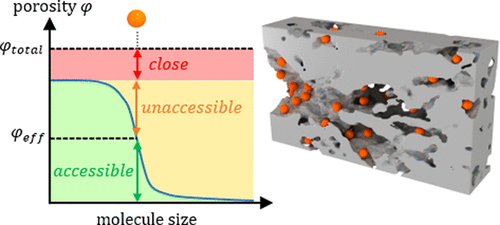 Abstract : A significant part of the hydrocarbons contained in source rocks remains confined within the organic matter—called kerogen—from where they are generated. Understanding the sorption and transport properties of confined hydrocarbons...
Abstract : A significant part of the hydrocarbons contained in source rocks remains confined within the organic matter—called kerogen—from where they are generated. Understanding the sorption and transport properties of confined hydrocarbons...
Download article in pdf
Download SI in pdf
URL of the article
22. Size-dependent Hydrogen trapping in Palladium nanoparticles.
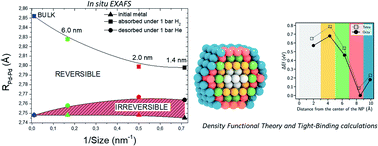 Abstract : We report an experimental study, supported by a theoretical approach based on simulations, to explore the phenomenon of H trapping in small Pd nanoparticles...
Abstract : We report an experimental study, supported by a theoretical approach based on simulations, to explore the phenomenon of H trapping in small Pd nanoparticles...
Download article in pdf
Download SI in pdf
URL of the article
21. Hydrocarbon Diffusion in Mesoporous Carbon Materials: Implications for Unconventional Gas Recovery
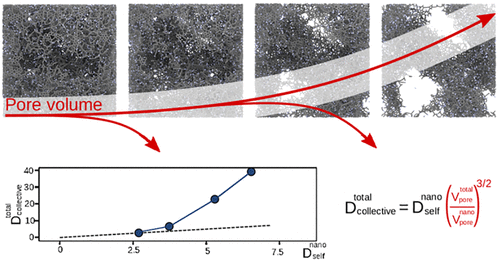 Abstract : Methane diffusion in micro- and mesopores of carbonaceous materials is dominated by molecular interactions with the pore walls. As a consequence, the fluid molecules are mainly in a diffusive regime and the laws of fluid mechanics are not directly applicable...
Abstract : Methane diffusion in micro- and mesopores of carbonaceous materials is dominated by molecular interactions with the pore walls. As a consequence, the fluid molecules are mainly in a diffusive regime and the laws of fluid mechanics are not directly applicable...
Download article in pdf
Download 3D structures of porous carbon materials (xyz files)
URL of the article
20. Morphology control of metallic nanoparticles supported on carbon substrates in catalytic conditions.
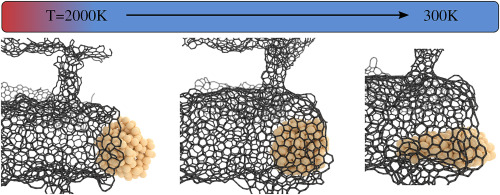 Abstract : Metallic nanoparticles are highly reactive objects, often used for their catalytic properties which strongly depend on their shape and morphology. Here we show that controlling the wetting...
Abstract : Metallic nanoparticles are highly reactive objects, often used for their catalytic properties which strongly depend on their shape and morphology. Here we show that controlling the wetting...
Download article in pdf
Download SI in pdf
URL of the article
19. Cutting floating single-walled carbon nanotubes with a ‘CO2 blade’.
 Abstract : Uniform ultra-short (<100 nm) single-walled carbon nanotubes (SWCNTs) with properties of rich chemistry, high dispersity and easy manipulation...
Abstract : Uniform ultra-short (<100 nm) single-walled carbon nanotubes (SWCNTs) with properties of rich chemistry, high dispersity and easy manipulation...
Download article in pdf
Download SI in pdf
URL of the article
18. Entropy driven stability of chiral single-walled carbon nanotubes.
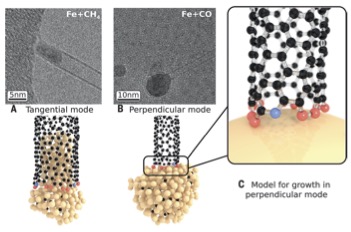 Abstract : Single-walled carbon nanotubes are hollow cylinders that can grow centimeters long via carbon incorporation at the interface with a catalyst. They display semiconducting or metallic characteristics, depending on their helicity, which is determined during their growth...
Abstract : Single-walled carbon nanotubes are hollow cylinders that can grow centimeters long via carbon incorporation at the interface with a catalyst. They display semiconducting or metallic characteristics, depending on their helicity, which is determined during their growth...
Download article in pdf
Download SI in pdf
URL of the article
17. Growth Modes and Chiral Selectivity of Single-Walled Carbon Nanotubes.
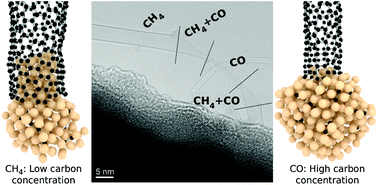 Abstract : Chemical vapor deposition synthesis of single-walled carbon nanotubes, using an Fe catalyst, and alternating methane and carbon monoxide as carbon feedstocks, leads to the reversible formation of junctions between tubes of different diameters...
Abstract : Chemical vapor deposition synthesis of single-walled carbon nanotubes, using an Fe catalyst, and alternating methane and carbon monoxide as carbon feedstocks, leads to the reversible formation of junctions between tubes of different diameters...
Download article in pdf
URL of the article
16. Magnetism as indirect tool for carbon content assessment in nickel nanoparticles.
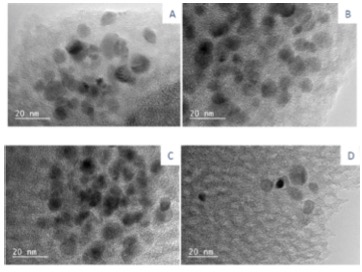 Abstract : Chemical vapor deposition synthesis of single-walled carbon nanotubes, using an Fe catalyst, and alternating methane and carbon monoxide as carbon feedstocks, leads to the reversible formation of junctions between tubes of different diameters. Combined with an atomistic modeling of the tube/catalyst interface...
Abstract : Chemical vapor deposition synthesis of single-walled carbon nanotubes, using an Fe catalyst, and alternating methane and carbon monoxide as carbon feedstocks, leads to the reversible formation of junctions between tubes of different diameters. Combined with an atomistic modeling of the tube/catalyst interface...
Download article in pdf
URL of the article
15. Probing the role of carbon solubility in transition metal catalyzing single-walled carbon nanotubes growth.
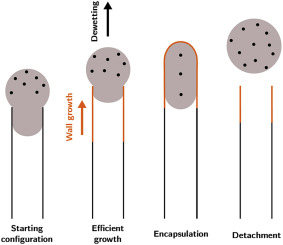 Abstract : Metal catalysts supporting the growth of Single Wall Carbon Nanotubes display different carbon solubilities and chemical reactivities. In order to specifically assess the role of carbon solubility, we take advantage of the physical transparency of a tight binding model established for Ni-C alloys, to develop metal carbon models where all properties, except carbon solubility, are similar...
Abstract : Metal catalysts supporting the growth of Single Wall Carbon Nanotubes display different carbon solubilities and chemical reactivities. In order to specifically assess the role of carbon solubility, we take advantage of the physical transparency of a tight binding model established for Ni-C alloys, to develop metal carbon models where all properties, except carbon solubility, are similar...
Download article in pdf
URL of the article
14. Structural Properties of Double-Walled Carbon Nanotubes Driven by Mechanical Interlayer Coupling
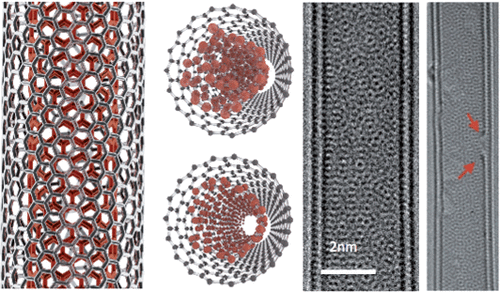 Abstract : Structural identification of double-walled carbon nanotubes (DWNTs) is presented through a robust procedure based on the latest generation of transmission electron microscope, making possible a statistical analysis based on numerous nano-objects...
Abstract : Structural identification of double-walled carbon nanotubes (DWNTs) is presented through a robust procedure based on the latest generation of transmission electron microscope, making possible a statistical analysis based on numerous nano-objects...
Download article in pdf
Download SI in pdf
URL of the article








